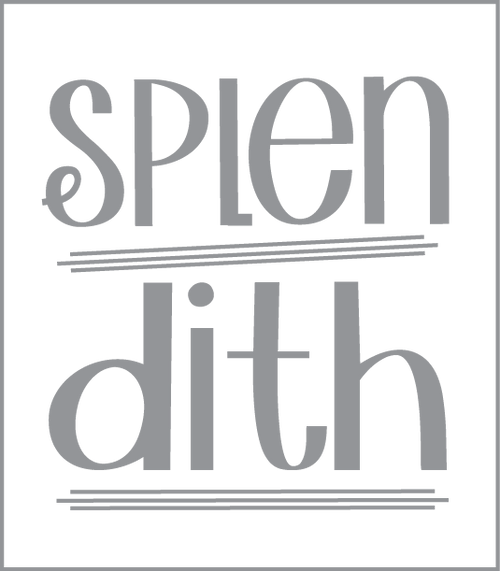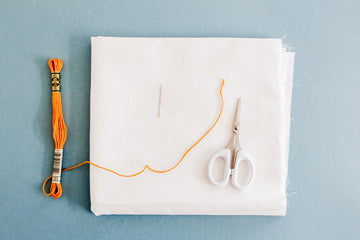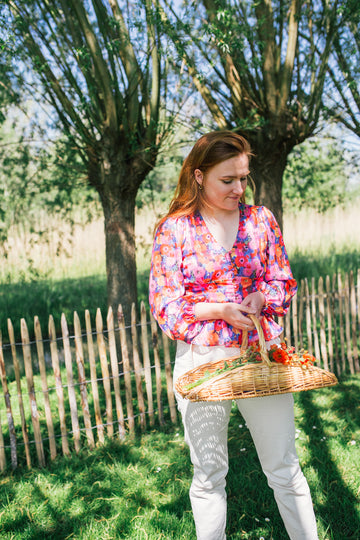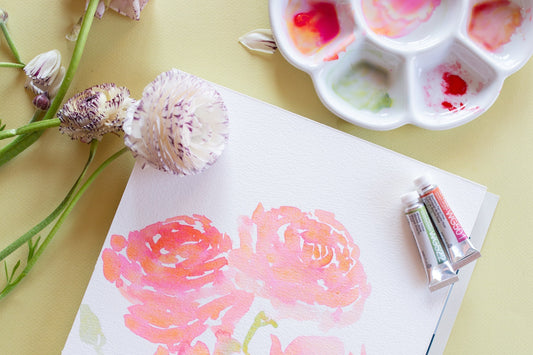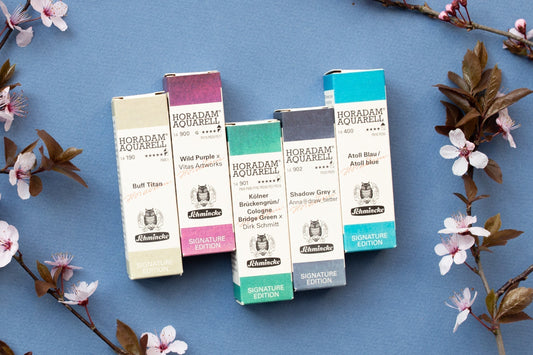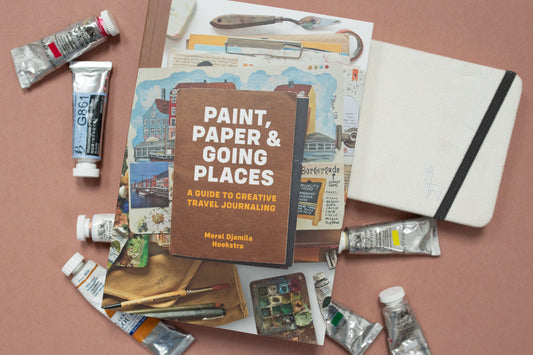Since I started embroidering, I have made quite a few mistakes. Of course you learn from your mistakes: but what if you can skip them right away? I made a separate video about it. In the blog you can read which mistakes you can easily make as a beginner and how you can best avoid them.
Which beginners mistakes you can avoid:
1. A sharp needle
When I went to buy my materials, I told them that I was going to start free embroidery. The saleswoman asked me if I wanted a sharp or blunt needle. I thought: I need a sharp needle. But once I got started I quickly noticed that a sharp needle is not easy at all. With a sharp needle you can damage the embroidery thread or fabric, or you can poke a hole in your fingers ;). A blunt needle is also a lot more useful when you have to prick a few times before you find the right hole for the thread.
When buying the needle, pay attention to the following things:
- Does the needle have a blunt point?
- How thick is a needle?
- How big is the eye of the needle.
Read more about this in the blog about embroidery needles.
2. Do not stretch the fabric tightly in the frame
The first piece of fabric I put into the embroidery frame was quite tight. I just forgot to tighten it afterwards. It is important that you stretch the fabric properly in the frame, so that there is hardly any play in the fabric. This makes your embroidery a bit easier and more beautiful.
Read the tutorial here on how to stretch the fabric in the embroidery frame.
3. Too thick a wire to start with
Did you know that DMC embroidery thread has 6 threads in one skein? I started embroidering with all six threads at once. The thread is actually too thick to embroider beautiful satin stitches. It is often nicer to embroider with three threads at the same time. You cut off the piece you need and divide it in half. By taking them apart gently, they also avoid getting tangled.
What I was very happy with: I immediately started with DMC yarn. It is certainly not without reason that it is the most popular and widely available embroidery thread. Quality is important because you don't want a color of yarn to 'bleed' into the fabric. Ink can bleed into paper, but that can happen with ink from yarn or fabric. Maybe you would also like to wash the embroidery? That is also possible with this yarn. The fact that DMC is available everywhere is of course also super useful if you need some extra yarn for a project. There are more than 500 colors available, seriously: have you seen those colors!
4. Too short a wire to start with
In the beginning it is difficult to estimate how long your thread should be for an item. You can easily cut off about 40cm to practice your stitches. I always find: the longer the thread, the faster the thread goes into the knot. Of course you don't want that either, so if you cut a longer piece, hold a piece double through the eye of the wire. You can always shorten that part a little.
5. Too coarse or too fine fabric
To start embroidering you want a fine fabric with even threads. The fabric should not be woven too loosely, so that you have to fill large gaps. And on the other side, there must of course be room left for the wire you are going to use. The right middle ground can be difficult to find, so I have looked it up for you. You will find the fabrics in the shop, with examples with the thread.
More about fabric here.
6. Cutting the fabric too tight along the embroidery hoop
To get the fabric into the ring correctly, you will need some extra fabric at the edges. You can use those edges to stretch the fabric tightly in the embroidery hoop. If you cut the edge too tight, it will no longer work. You can read how the fabric stretches in this tutorial.
7. Drawing with a pencil instead of the right pen
I did the first sketch with a pencil on the fabric. Of course, when I started drawing with a pencil, I knew I couldn't erase it on fabric. In the absence of the right pen, that seemed like the best alternative. I had drawn one too many leaves and still have the gray steep visible. The FriXion pen is ideal for sketching on fabric! The FriXion ink disappears due to heat, you can of course find it in the shop!
Do you have any questions? Let them know in the comments!
You will find all embroidery materials here.
Love,
Judith
